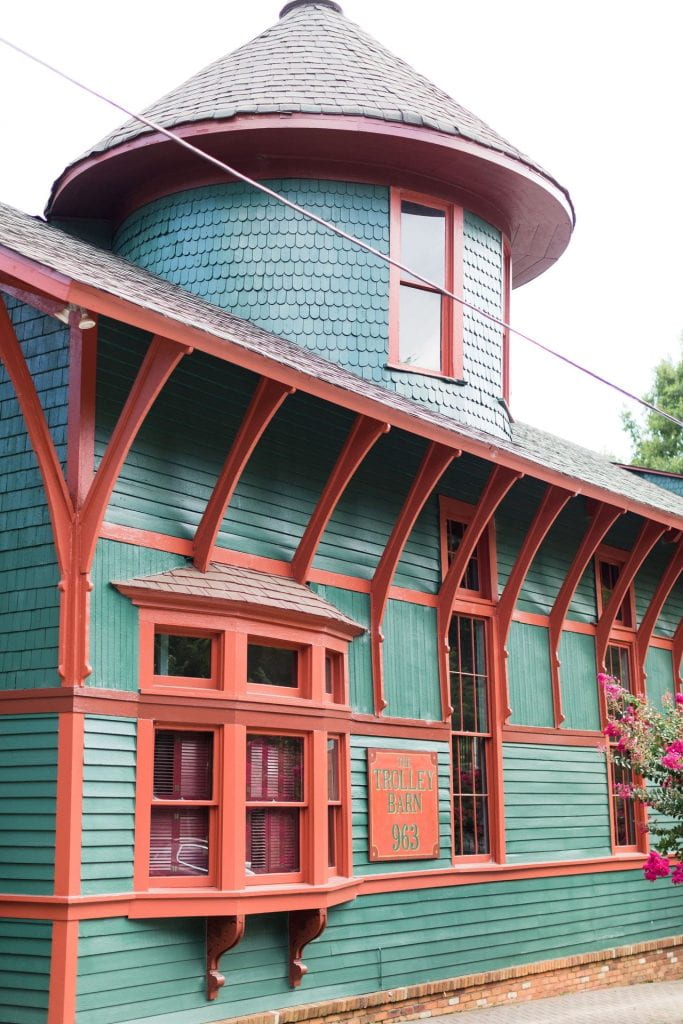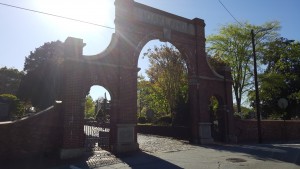Growing up in repressive rural Georgia hours north of Atlanta, I dreamt of going to Pride in Piedmont Park – a chance to experience freedom, joy, hope, and love in the expression of the queer identity. Now at college and in my third year in the city, I am a few months out from attending my third Atlanta Pride. It has been everything I hoped: the colors, smiles, excitement, compliments, free mom hugs, drag queens swinging from poles on moving floats, seeing old friends, making new connections, and overwhelming emotion at the scale of LGBTQIA+ representation. Pride at Piedmont Park and the larger community provides the most electrifying, knowing, and supportive environment where one can see those both alike and different. Every year the smaller-than-you’d-think community gathers bumping into exes and impending self-realization yet are happy in the light air of the large gathering of a normally stigmatized and disjointed community. Experiencing this I found myself curious as to how such a setting, and Atlanta Pride, were born – what people, places, and ideals coalesced to create the resonant gay culture that midtown has become known for?
Continue readingthe histories of our streets
Georgia State University students map Atlanta's past
Tag: NE ATL
The Birth of Pride in Atlanta: 20th Century Origins of Gay Rights in Midtown and Downtown
Laboring in the Gate City: The 1964 Scripto Strike and its Precedents
Early Days
Not knowing what to do with the bankrupt National Pencil Company, owner Sigmund Montag sold his company to his son-in-law Monie Ferst in 1919. In 1931, Mr. Ferst would move his company, now renamed to Scripto, to a new location on Houston Street in Sweet Auburn that by the 1940s had an employee base of nearly all working-class Black women. Indeed, Scripto counted itself as one of the earliest Atlanta companies to hire Black employees for work on the assembly line.1
Continue readingServing the Community: The Shopping Center that became Plaza Fiesta

As a first-generation Mexican-American, Plaza Fiesta is a place with fond memories. The plaza was one of the rare places where I felt that I fit in, away from the stares of others. I grew up in a majority-white community in Cherokee County, Woodstock. So, getting to experience places like Plaza Fiesta occasionally was very refreshing for me and my family. Here, we didn’t have to worry about our English proficiency. Instead, we didn’t need English at all. My father got to ask all his silly questions without me having to translate them, and my mother got to feel a little less homesick. Granted, this is only one of many small spaces along Buford Highway that give Mexican families a sense of familiarity. However, Plaza Fiesta is different because it is the only market designed for Hispanic communities to spend their day like they would in their countries.
Looking at this lot’s history, we can see the evolution of Buford Highway and its demographic change. We will also see that the lot has always been geared towards the community in the area. This lot, along with many other spaces in the corridor, shows the adaptability and openness to new business regardless of race.
Continue reading
If you travel down Edgewood Avenue, you’ll pass through historic parts of Atlanta that have a deep and rich history with the city of Atlanta, including through the retail district and into the historic Inman Park neighborhood. This rich history extends throughout Edgewood Avenue, however there is one building which tends to stand out near the east end of Edgewood Avenue, near the Inman Park/Reynoldstown MARTA station — the Trolley Barn.
Oakland Cemetery serves as one of the key landmarks of antebellum Atlanta, Georgia. Oakland Cemetery sits in stark contrast to the rest of the city with its towering trees, rather than towering building, and its old brick roads rather than hot black asphalt. Oakland Cemetery serves as a monument to Georgia’s past while simultaneously growing and morphing with the present. It is general knowledge that some of the city’s most influential characters, such as Margaret Mitchell and Bobby Jones, lay at rest within its walls and it is the oldest cemetery in Atlanta. However, who in the city knows about the erection of the eastern wall or the problems that had to be handled in Oakland’s early years? A great deal of Oakland’s history remains a mystery to the people of Atlanta and throughout this analysis I will shed light on its origin story. Continue reading
Talking a walk down Auburn Avenue is an experience that many Atlanta residents and tourists have enjoyed. When walking down Auburn, it is easy to be taken aback by how beautiful the birth home of Dr. King is. It is easy for residents and tourist to stop and admire the burial site of Dr. King and his wife Coretta Scott King. Tourists and residents are blown away when they view the massive mural of civil rights leader and congressman John Lewis. With all of these civil rights giants in one small street it is easy to understand why the John Wesley Dobbs Plaza on the corner of Auburn and Fort Street does not get much attention. Hundreds of people drive or walk pass the plaza on a daily basis and yet one does not find many people stepping inside the plaza and admiring the statue of John Wesley Dobbs. The plaza is overshadowed by the presence of Dr. King’s historical site and John Lewis’ mural, which is an appropriate metaphor as to how the legacy of Mr. Dobbs has been largely forgotten by the mainstream public.
The Sweet Auburn Curb Market is a historic market located in downtown Atlanta . In 1918 Atlanta established a “curb market” on land cleared by the Great Atlanta Fire of 1917. This fire decimated the Old Fourth Ward of Atlanta, destroying almost two thousand homes and leaving over ten thousand Atlantans, mostly blacks, homeless.[1] After the fire a tent market occupied the site.
Antebellum and Civil War Businesses and Workers Demolished Buildings Downtown Education Food and Dining Grant Park GSU's Campus Highways Historic Buildings Immigrants Memorials NE ATL NW ATL Old Fourth Ward OTP People Politics Public Housing SE ATL Sports and Entertainment Summerhill SW ATL Sweet Auburn
Subscribe by Email
Completely spam free, opt out any time.
Please, insert a valid email.
Thank you, your email will be added to the mailing list once you click on the link in the confirmation email.
Spam protection has stopped this request. Please contact site owner for help.
This form is protected by reCAPTCHA and the Google Privacy Policy and Terms of Service apply.

Header image: George F. Cram, Atlanta (1883)
© 2024 the histories of our streets
Theme by Anders Noren — Up ↑

